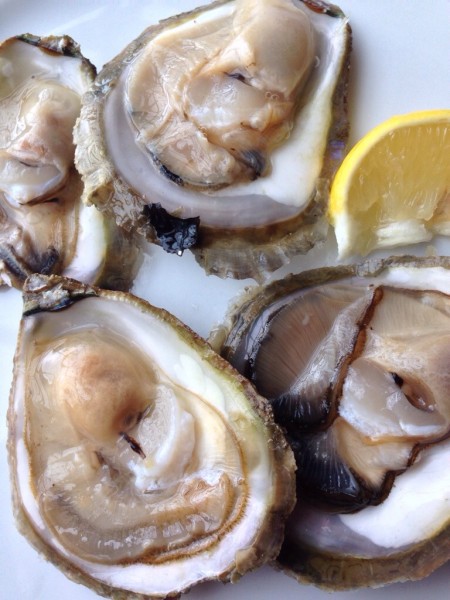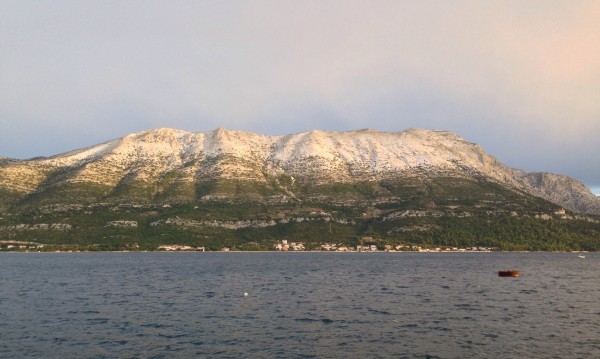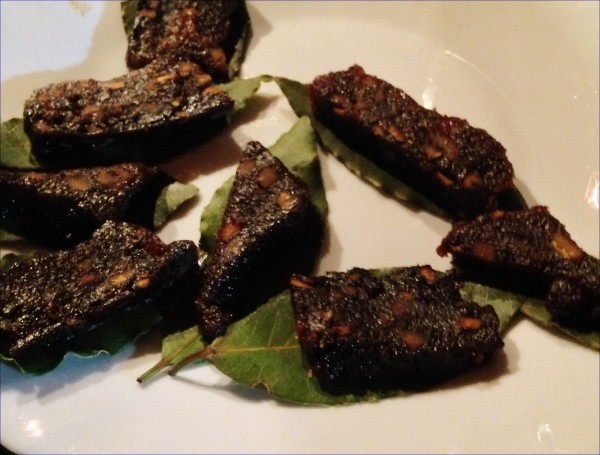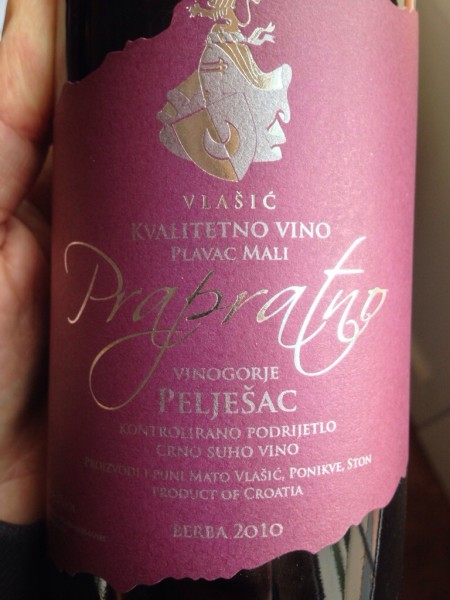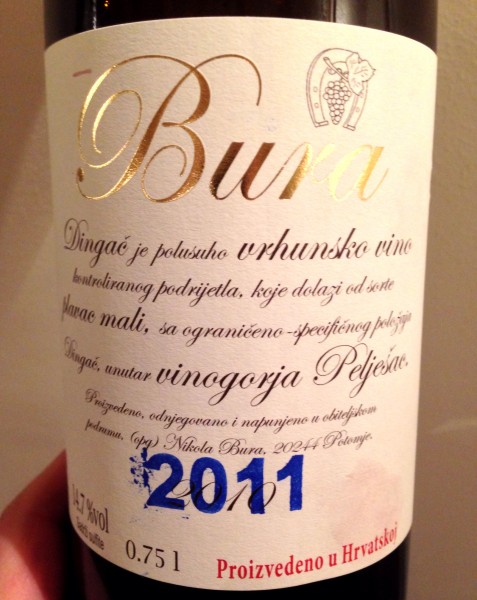Touring Dalmatia: Pelješac
Posted on 28 November 2013
Our next stop on the Dalmatian coast was 40 km north-west of Dubrovnik: the Pelješac peninsula. Its elongated shape does resemble an island but it is connected to Balkan mainland by a thin strip at Ston. The Ston bay waters provide a perfect habitat for oysters, and the small, delicate, round examples we sampled at lunch were delicious.
Paradoxically for an area so rich in outstanding seafood, Pelješac produces mainly red wine. And one of the world’s heftiest for that matter: Plavac Mali. This grape variety, genetically related to Zinfandel and Primitivo, grows everywhere in southern and central Dalmatia, but arguably delivers the best results on Pelješac’s sun-drenched, steep stony vineyards.
There are minor differences in style depending whether Plavac comes from the peninsula’s northern part, from the central zone of Potomje or the western grands crus of Postup and Dingač. But in fact there is more consistency than variation: Plavac always has big, jammy, pruney, baked-like fruitiness with plenty of body, often rustic, crunchy tannins, and heroic levels of alcohol. In fact 15% alc. was the average rather than the maximum of the wines I tasted here, and several bottlings went north of 16%. Yet unlike a Shiraz or a Merlot which would taste positively stewed at those levels, Plavac achieves a pretty natural balance at 14.5–15% and I can safely say none of the wines tasted excessively alcoholic. There is an underlying freshness to the plummy fruit, especially when the wine is left unoaked, that made me think of the similarly construed Primitivos of Apulia I covered e.g. here. Like Pichierri’s remarkable Primitivo which tasted as fresh as a daisy at 18%, Plavac Mali tells you alcohol is not just about the two digits before the comma: it’s important to see what the natural ripeness level of a given grape.
The other notable thing about Pelješac is the high level of its wines. Unlike Konavle, this area has consistently produced good wine even in Yugoslav time, and I was actually surprised how good several second-league wines were. There were also many highlights, including Vlašić, a producer hitherto unknown to me who dlivered a brilliant 2011 Plavac Prapotno (red label; there’s a lighter, white-label version with the same name) clocking in at 15.5% and exploding with pruney chocolatey fruit. Vinarija Dingač, an old favourite, has made a stunningly intense, balanced Dingač 2008.
Historical producer Mike Grgić (of Napa Valley and Judgment of Paris fame) makes a no-nonsense, structured Plavac 2008 for long ageing. The newly established Saints Hills winery sought the consultancy of Michel Rolland who unsurprisingly brought his favourite toys, concrete and vertical wood fermenters, and malolactic in oak, as well as a very oaky and somewhat extracted style but the Sv. Lucia 2010 promises to be an impressive (rather than inspiring) rendition of Plavac down the road. Korta Katarina, one of my favourite producers, take it easy on the jammy and alcoholic front, producing something more in tune with great Languedoc Syrah: tannic, chewy, ageworthy and exciting.
But all these wines were paled by a remarkable trio of new released from the Mrgudić / Bura family, a garage producer from the Dingač cru. Their Benmosché Dingač 2011 (produced for insurance mogul Robert Benmosché who owns the vineyard) could well be the best dry wine from Dalmatia I tasted here, layered with chocolate, plum jam, and wild herbs flavours, while the Bura 2011 is a outrageous semi-sweet Plavac Mali with 16% alc. and plenty of sugar. You’d normally ridicule the style just based on what I wrote but the intensity and clarity of fruit in the Bura is so outstanding we all happily drank it with the traditional brudet fish stew, careless about whether it really matched and hoping there would be more in the bottle than 750 ml. A wine larger than life, and a perfect picture of Dalmatia’s generous Mediterranean nature.
Disclosure: my trip to the Croatia including flights, accommodation and wine tasting programme is sponsored by Zagreb Vino.com.


